- Author Jason Gerald [email protected].
- Public 2023-12-16 10:50.
- Last modified 2025-01-23 12:04.
Cassettes have now been replaced by other, more practical music players. However, don't worry. You can still transfer the audio cassette to your computer. Read this article to learn how.
Step
Part 1 of 6: Preparing the Record
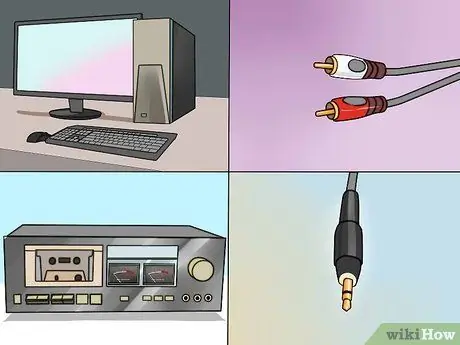
Step 1. Gather your gear
In addition to the cassette and the computer, you will also need a cable that connects the cassette deck to the computer's line input. The type of cable needed depends on your cassette deck. Head over to the Things You Need section below to see a list of your options.
- Almost all cassette decks have a 3.5 mm headphone jack. If your computer has a headphone jack, you'll need a cable with 3.5mm stereo plugs on both ends, or a cable with a suitable adapter so that both ends of the cable are 3.5mm stereo plugs.
- Many cassette decks have unbalanced line outputs. You'll recognize it if the deck has red and white rings. You will need to use a cable with 2 RCA plugs on one end, and a 3.5 mm plug on the other. You can also use an adapter.
- High-quality cassette decks can be equipped with a balanced line output, with dual 3-pin XLR-F connectors, or a balanced 3.5 mm jack. For this deck, you'll need a cable that has an XLR-M or 3.5mm plug on one end, and a plug that matches your computer's sound input on the other. If you are using a cassette deck with a balanced output, chances are your computer's sound hardware has a balanced input. Otherwise, you will need an adapter to convert a balanced signal to an unbalanced one. Consult your local audio store to find the option best suited to your hardware setup.
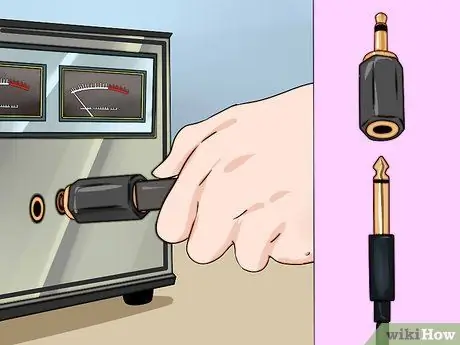
Step 2. Connect the headphone jack
Plug one end of the cable into your cassette deck's headphone jack, and the other end into your computer's line input (not microphone input). Most of the input lines are blue and look like curves or waves spreading out over them. Usually, it's next to the speaker/headphone output (green) and microphone input (pink). If you're going to use Audacity, make sure it's set to “line input” by clicking the menu next to the microphone icon.
- Make sure the plug is fully inserted and secure so that the sound is clear.
- If your PC or laptop doesn't have a line-in, you may also want to use a microphone-in port. However, it should be noted that the port is likely monophonic, not stereophonic.
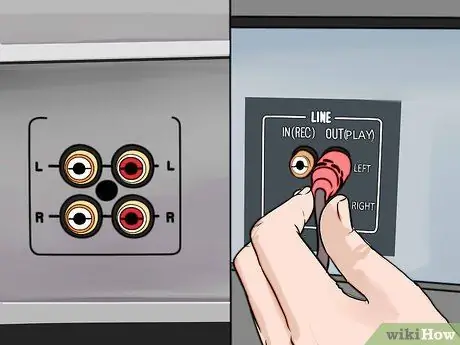
Step 3. Connect the line output jack
Connect the red and white RCA cables to match the red and white jacks on the cassette deck or receiver. (Note that some receiver cables have a special "recording output", which can also be used because it produces the same output level as the cassette deck line out). Insert the 3.5 mm plug into the line in jack on the computer.
- Make sure the plug is inserted completely and securely.
- If your PC or laptop doesn't have a line in, you might as well use a microphone-in port. However, the microphone-in port is usually monophonic, not stereophonic.
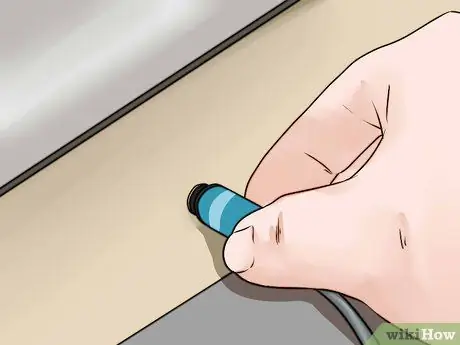
Step 4. Connect the balanced output line
Insert the XLR or phone plug into the left or right output, and the other end of the cable into your computer's sound input. If you plug it into an unbalanced 3.5mm line input jack, you'll need an adapter that converts balanced output to unbalanced, and adjusts the line output connector of your sound card.
Note: You should NOT connect your speaker output to any input on the sound card as this will destroy the sound card and damage your amplifier
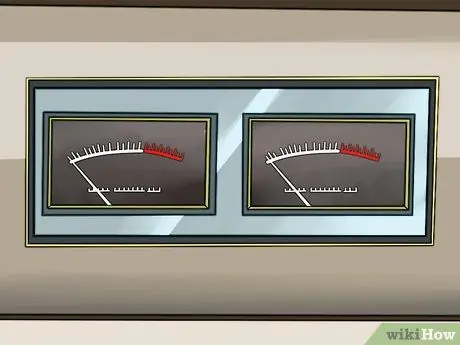
Step 5. Check your voice input level
To get the best recording results, you should make sure the amount of incoming signal is correct. If it is too loud, the sound will be distorted. Too small, and there will be a lot of hissing and muffled sound.
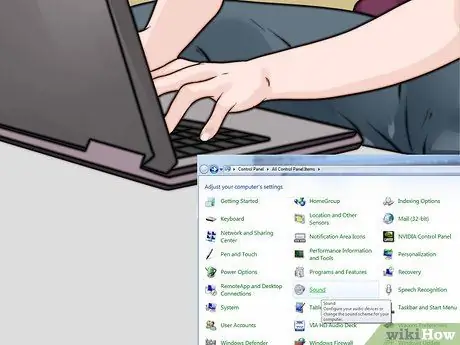
Step 6. Set your input and adjust level on Windows PC
Open the Sound control panel by clicking the Start button, then clicking Control Panel. Type in “sound” and then click Sound in the result.
- Click the recording label, then click Line in, then click Set Default.
- Click Properties, then click the Levels label. Move the volume slider to the right to increase the recording volume, then click OK. When you return to the Sound dialog box, click OK.
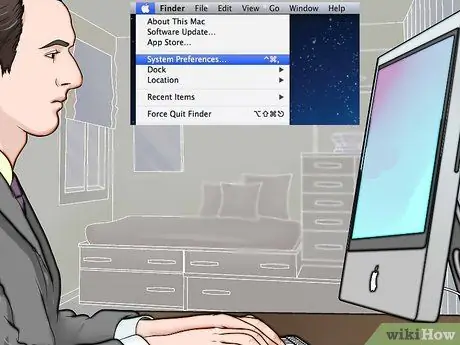
Step 7. Set input and adjust level on Macintosh
Open the Sound control panel in System Preferences. Click the input button at the very top of the window, and make sure Line-in is selected in the list.
- Set the volume input control in the Sound control panel to 75%. Set your cassette deck headphone output to 0.
- Find the loud passage on the cassette tape that you want to record, then press “Play” on the cassette deck. Monitor the meter while slowly increasing the cassette deck output volume. When the meter on the Sound control panel flashes regularly at 80% (about 12 “LED” lights), your recording sounds good. If you need additional levels after the cassette deck output is maximum, increase the input volume in the Sound control panel. If you want to lower the volume, lower the level of the recorder. This setting will give the cleanest signal overall.
- Note: Unless you have a very high output from your headphone jack, this method has little risk of damaging your sound card. By setting the cassette deck output to zero, then slowly raising it, you ensure that your sound card is not damaged.

Step 8. Decide which software to use
This will depend on how many tapes you want to convert, how good the quality is, and how you play the recording on your computer. This article covers basic sound recording software, such as Audacity and QuickTime, as well as professional voice recording applications.
Part 2 of 6: Using QuickTime on Mac

Step 1. Consider getting QuickTime
The program is easy to obtain, well supported, and a great choice for high-quality basic conversions. The interface is uncomplicated and the editing capabilities are simple making this program very easy to use. This program is therefore perfect if you want to transfer lecture lectures, audiobooks, or any super-long audio recordings.
- For Macintosh users, QuickTime X, which is compatible with OS X 10.6, 10.7, and 10.8, is capable of recording from external sources.
- For users of Windows (and older versions of Mac OS), QuickTime 7 Pro is available from Apple. Visit this link: https://www.apple.com/quicktime/extending/ then choose the OS that suits you.
- Whenever you use QuickTime Player X, or QuickTime Pro, the process is the same when you're ready to record.
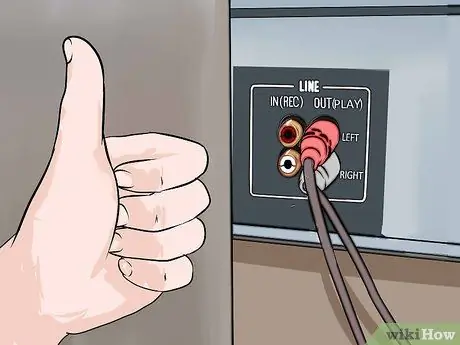
Step 2. Make sure everything is well connected
Check that the cassette player is connected, and that the level setting is correct. If any of the cables are loose or unsecured, the sound produced will not be of high quality.

Step 3. Launch QuickTime Player and select "New Audio Recording" from the File menu. This menu will open a simple control strip (QuickTime X) or a preview window (QuickTime Pro).
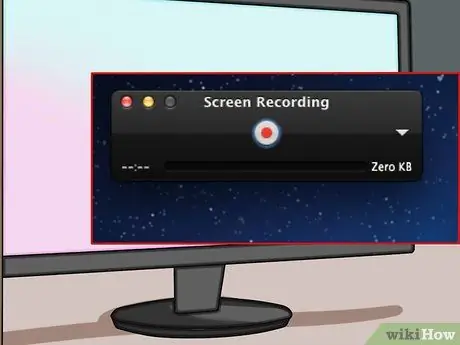
Step 4. Start your recording
press the red button in the center of the control area, then press the play button on the cassette deck.
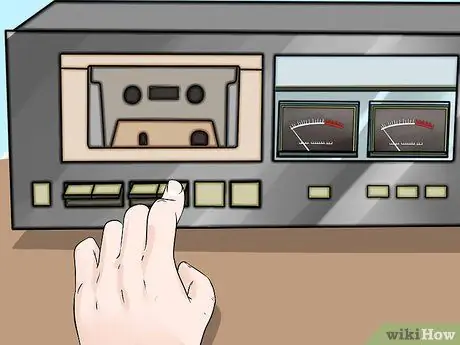
Step 5. Press the button again when finished recording, then turn off the cassette deck
Your file will be automatically saved to the desktop.
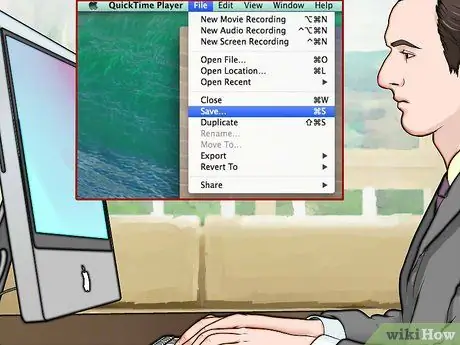
Step 6. Save the file to a new location
After the recording is complete, your file will be automatically saved on the desktop. You can move the storage location to another place, for example to a special folder. How it's moved depends on the version of QuickTime you're using.
- If you are using QuickTime Player X: click the menu on the right side of the control strip to select multiple file storage locations.
- If you are using QuickTime Pro: select a different origin location in the Recording pane of QuickTime Player Preferences.
Part 3 of 6: Using PC Voice Recorder
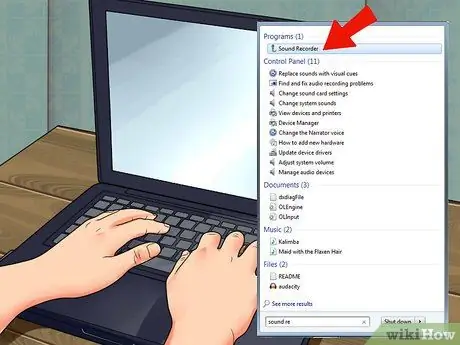
Step 1. Make the most of your Sound Recorder
every PC is equipped with a Sound recorder, and can be used for free. The interface is uncomplicated and the editing capabilities are simple which makes the program very easy to use. Like QuickTime Player X, this program is perfect for transferring super-long lectures, audiobooks, or other recordings.
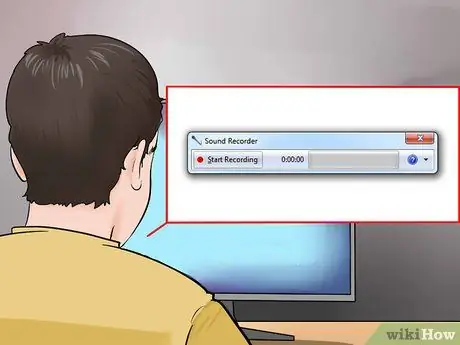
Step 2. Launch Sound Recorder
Click the Start button, and enter "Sound Recorder" in the search box. Click Sound Recorder in the list of search results.
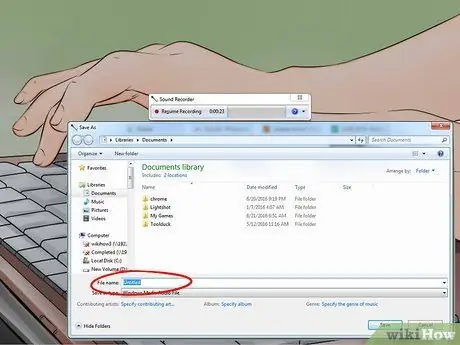
Step 3. Start your recording
Click "Start Recording," then press the play button on the cassette deck.
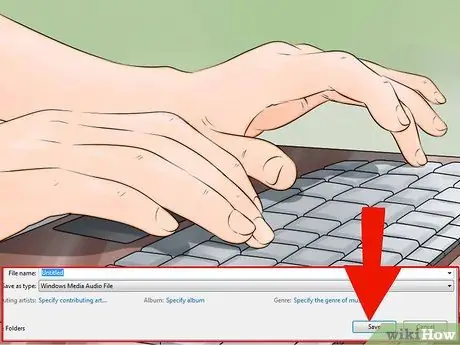
Step 4. Stop your recording when it's done
Press "Stop Recording," then on the cassette deck.
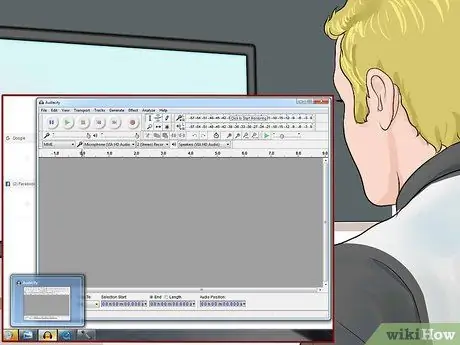
Step 5. Enter a name for the recording file, then click “Save
After this, you can use other editing programs to improve your recording, such as cutting silent pauses, enhancing sound, etc.
Part 4 of 6: Using Audacity
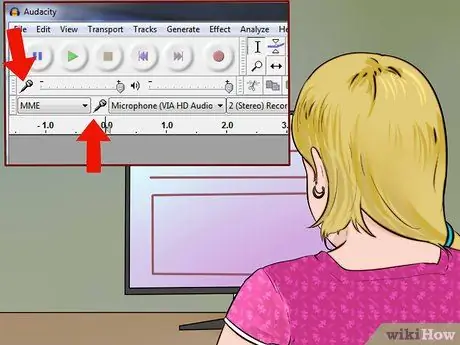
Step 1. Open Audacity
If you don't have it, you need to download it. Audacity is a free and open-source application that contains various features and capabilities. This program is also more flexible than other commercial applications!
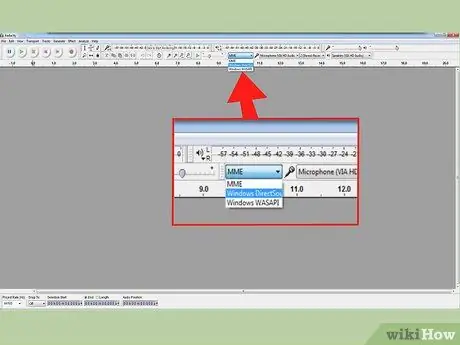
Step 2. Set the input sound in Audacity
Make sure the setting is on Line input by clicking the menu next to the microphone icon.
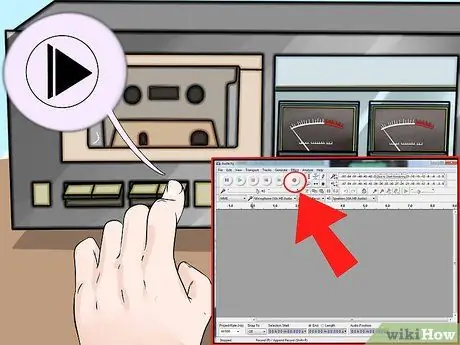
Step 3. Press the “Record” button, then press “Play” on the cassette deck
The record button is shaped like a red dot. The recording process may take a while, so consider working on other tasks for the time being.
To prevent you from forgetting the recording, run a reverse line out from the computer back to your stereo speaker system. You have to click the monitor box in Audacity to do so. That way, when your tape finishes recording, you can hear the silence of the room and you can hurry up and click the stop recording button in Audicity

Step 4. Press the “Stop” button, then stop the cassette deck
When you are finished recording, stop the cassette player and recorder. The stop button in Audacity is usually a golden square.
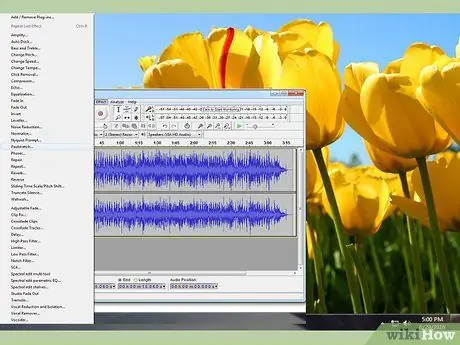
Step 5. Edit your audio for best results
Cut silent breaks, normalize them so you get maximum volume, break them up into tracks, etc.
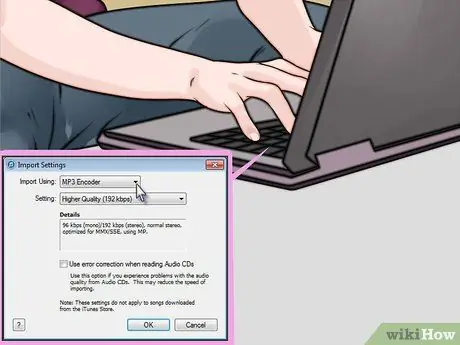
Step 6. Consider using the LAME plugin to convert music to MP3 format
This way, you can edit MP3 metadata for a variety of things, such as tracks, composers, years, albums, etc. This allows music players (such as iTunes and Android) to recognize the type of MP3 being played, for example: country, jazz, and the era (70s, 80s, or others).
Part 5 of 6: Using Professional Apps

Step 1. Use a professional application
For flexibility and professional cleaning, there are several applications that vary in price. The details vary, but they all use the same essential processes as even the most basic voice recorders.:
Make sure Line Input is selected in the software settings
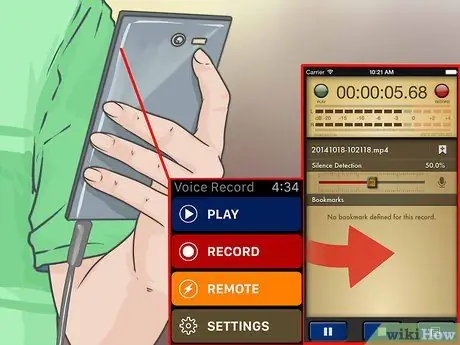
Step 2. Create your recording
Press the record button on the software and press the Play button on the cassette deck. Record your audio, then press the Stop button on the software, and finally the Stop button on the cassette deck.
How you start and stop recording in the software depends on the program itself. Each program has a slightly different layout
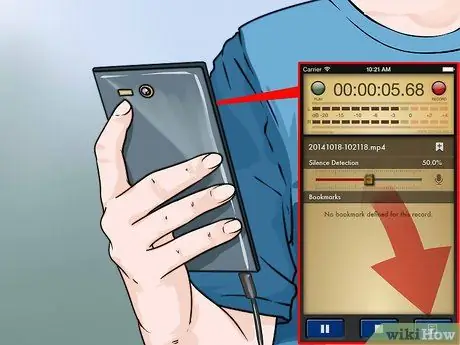
Step 3. Edit your audio
The advantage of a professional application is that it is able to allow you to split audio into regions (for CDs) and perform various professional mastering functions using high-quality plugins.
Options in the professional category include Sony's Sound Forge (a great choice for this type of work), PolderbitS and Cubase for PC, Garage Band and Logic Pro for Mac, and ProTools for both OS
Part 6 of 6: Polishing Your Recorded Audio (Mastering)

Step 1. Record a bit of audio first
Before moving the entire contents of your cassette collection to a hard drive, make sure the recordings produced are of good quality. Do a test record, then listen to the results. If you've set up the signal chain correctly, the digital copy of the analog cassette you get should be pretty clean.
- If the recorded audio is too quiet or noisy (the music is low but there is a lot of hiss), the output is too low and the recording is not getting enough signal to mute the sound.
- If the recording sounds like it's being played from faulty speakers or a meat grinder, your recording is too loud and the sound is distorted. Lower the output level of the cassette player, and try again.
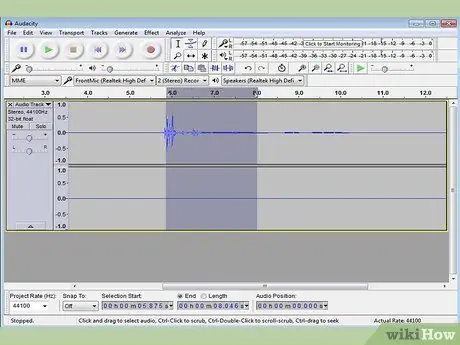
Step 2. Edit your recording
Perhaps, editing isn't even necessary at all, but if you (for example) want to cut a pause, delete some tracks, or change the volume, most sound recording programs will let you do that. This procedure is quite complicated if you are not experienced in sound editing, and it goes beyond the scope of this article.
When editing, it's a good idea to keep the original file as a backup and rename the edited file when it's saved in case you make a mistake. You can delete the original file when you are sure about the quality of your edited file

Step 3. Normalize
Once you have a good recording, the quality can still be improved using software tools. The most important of which is Normalization. Basically, you make sure the loudest peak is at or near 100% at full scale, when all meters are on (or 0dB, depending on your metering).
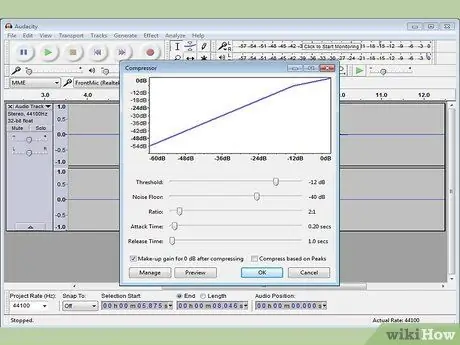
Step 4. Apply compression
Compression doesn't need to be applied to all your recordings as it can make a lot of music sound "off". How it works, compression keeps the loudest sound where it started, and raises the level in the quiet. Audio loses the difference between high and low, or dynamics, and results in a louder recorded sound. When listening to at home, this process isn't really necessary, but if you want to make a CD to play in your car, it can be useful.
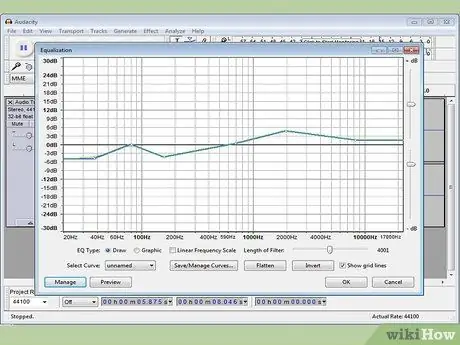
Step 5. Equalize (EQ) your audio
Depending on the speakers, how they are set up, and the overall quality of the playback system, adjusting the EQ so it's good can help. However, keep in mind, like compression, a "good" EQ is very subjective. For example, maybe you've adjusted the EQ so that it sounds good on your music player system. However, if a friend borrows your CD, the sound in their music player may sound thin, muffled, or strange.
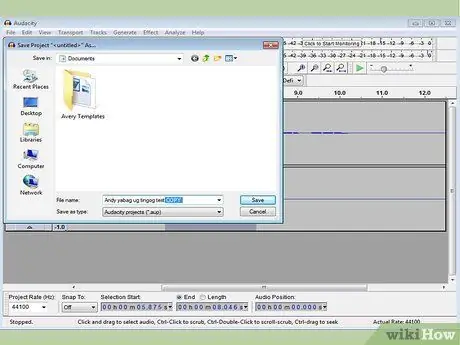
Step 6. Make a copy of your file
After transferring your old tape to the computer, make a copy immediately and all editing (normalization, EQ, compression, etc.) should only be done on this copy.
Tips
- To transfer digital sound to a cassette, simply use the same cable arrangement, but plug one end of the cable into the microphone or line-in jack on the cassette deck, and the other end into the computer's line out. Start with a low volume setting and adjust for good sound quality, then rewind and restart recording at that volume level.
- You probably don't need to buy recording software. Advanced sound recording and editing programs may be included with your sound card. Plus, you can find lots of great free programs on the internet for recording, editing, and converting audio file formats. It is important that before you start, read the help manuals for recording and editing programs.
- The audio file created may be a PC origin sound file type. You can play it with almost any audio program. However, these files are 10 times the size of an MP3 file so it's best to compress them to MP3 if file size is more important than sound quality. Sound recording programs or media players may have this function built-in. If not, you can get free conversion programs on the internet, for example Audio Grabber which will record audio directly into MP3. (link below).
- To improve the source sound from the cassette, adjust the azimuth. Listen to audio in mono and adjust the azimuth screw until you hear a sound with maximum treble. You may initially need to turn the screws right and left to feel the change in sound and settings that give you the best playback frequency.
- When creating your recordings, consider using Noise Reduction. Not all recording programs have it, but it's a great way to get good quality audio.
- You may need to set up your sound card so that it can record from the line-in port. You can do this in Windows via the volume control in the system tray (near the clock). Double-click the volume icon, then click Options in the window that opens, then Properties, Recording, then click OK. Make sure you've selected the line-in box.
- Don't throw away old cassettes or cassette decks as they will be rare and very valuable
Warning
- Before deciding to carry out this process, read the comments section (click the “Discuss” label), especially comments regarding the quality of the music cassette.
- Don't throw away the cassette. Always keep your master copy. You'll need it when your hard drive crashes, or it crashes during transport, or when your new computer is able to record better. Also having a cassette will give you the copy rights to the copy you make.
- Be careful with the type of cable used. Cheap cables often don't have an electrical shield. If your cable is of poor quality, the program will also record computer fan noise as well as analog audio.
- The uncompressed audio file size is very large. A single cassette may be hundreds of MB in size, so make sure there is enough space on your hard drive.
- Attempting to transfer cassettes using a boombox or portable stereo may result in audio of lower quality than expected.
- you may not get the results you expect, unless you use special and expensive equipment. Worst case, the computer can be damaged.
- Make sure you're not infringing on any patents with your recordings. Your cassette may be old, but the patent is usually still valid. Keep your recordings for your own enjoyment, don't sell them for money.
- The outcome of the recording, especially for music cassettes, will depend on several factors: the quality and condition of the cassette, cassette deck, computer and A-D converter (or sound card), your connecting cables, and your level of knowledge and experience in sound editing.
- Some sound recording programs tell you to turn up the volume on the cassette deck. If you are inexperienced, do so with extreme caution as it can damage the computer.
- Start at a low volume on a cassette or stereo deck because the computer's input circuitry can be damaged by high-level inputs.






